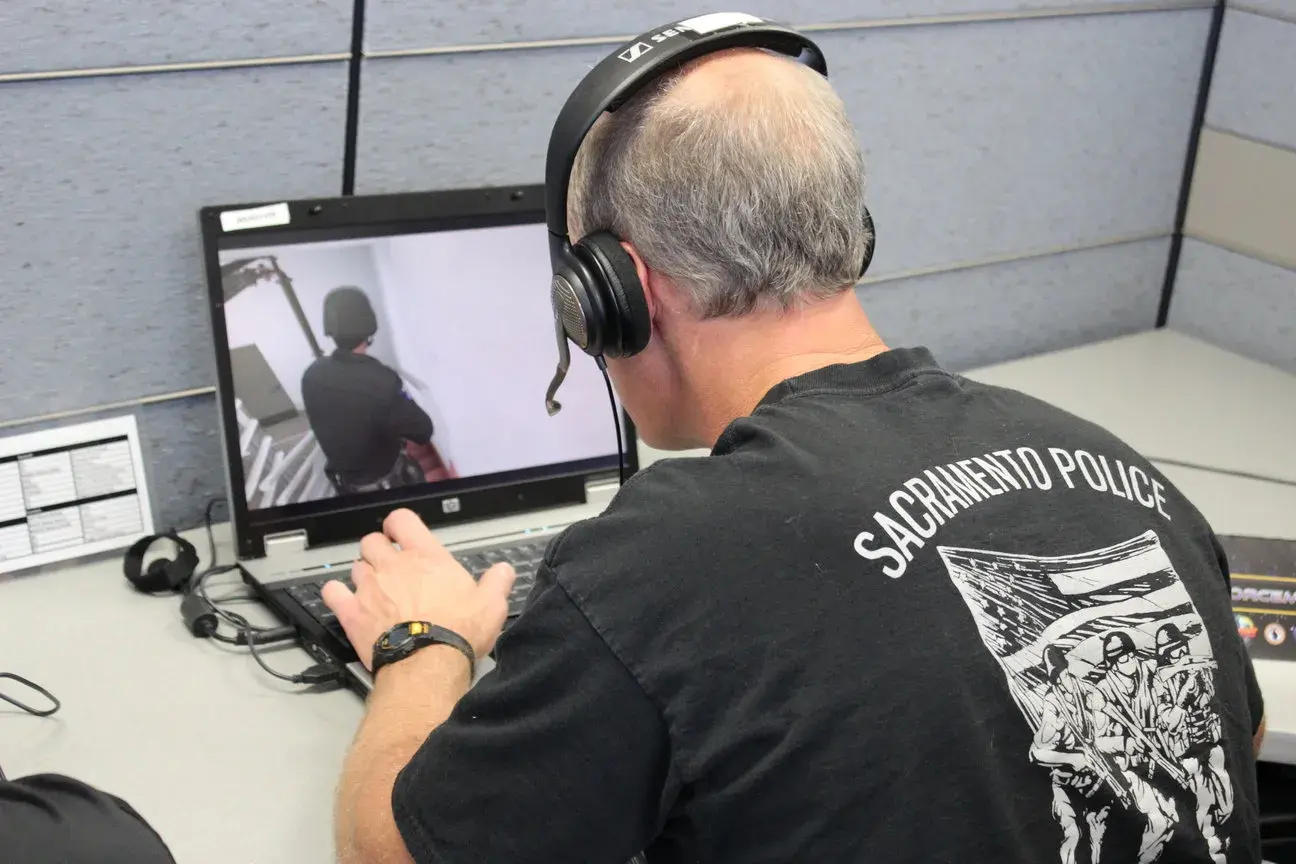The Department of Homeland Security (DHS) offers a broad set of tools to help law enforcement and private sector partners prepare for active shooter scenarios, enhance preparedness capabilities, and help mitigate potential threats. At the request of the first responder community, the DHS Science and Technology Directorate (S&T), in partnership with the U.S. Army Training and Doctrine Command and the U.S. Army Simulation and Training Technology Center (STTC), developed a training technology to enhance first responder training capabilities and enhance coordination across multiple agencies, disciplines, and jurisdictions.
prepare for active shooter scenarios, enhance preparedness capabilities, and help mitigate potential threats. At the request of the first responder community, the DHS Science and Technology Directorate (S&T), in partnership with the U.S. Army Training and Doctrine Command and the U.S. Army Simulation and Training Technology Center (STTC), developed a training technology to enhance first responder training capabilities and enhance coordination across multiple agencies, disciplines, and jurisdictions.
The Enhanced Dynamic Geo-Social Environment (EDGE) is a virtual training platform developed from existing technology that allows first responders to participate in complex training scenarios—improving coordination and communication across all jurisdictions, as well as mitigating injuries and loss of lives.
The pilot scenario provides a training platform for law enforcement, emergency medical services, fire, unified command, and dispatch to virtually train on a simulated active shooter response at a local hotel. The platform allows first responders from across jurisdictions to navigate geo-specific terrain; utilize ultra-high resolution vehicles, equipment, and tools to execute on-site protocols and procedures; evacuate innocent bystanders; and apprehend the suspect(s).
“The first responder community indicated to us that they have a high-priority need for a readily accessible, high-fidelity simulation tool that can be specifically tailored to local agency needs,” said Christine Lee, S&T program manager. “Specifically, they were seeking a way to integrate local operational tactics and procedures with cross-discipline training and exercises. S&T and its partners wanted to help meet this need and ensure they have a training tool to prepare themselves to effectively and safely respond.”
Moving forward, S&T plans to incorporate the active shooter and additional emergency scenarios into a customizable training tool available for multiple agencies to train their responders. In addition to the pre-designed, commonplace scenarios and environments that will be made available with the training platform, there will be opportunities for agencies to customize scenarios, existing infrastructure, and resources available to accurately depict the response environment within their own jurisdictions.
“There is a saying in the Army that nothing is a good as live training,” said Tami Griffith, Science and Technology Manager for Virtual and Game-Based Training at Army STTC. “In our world, you train over and over in the virtual environment, really establishing planning, protocol, and response, and then you follow it up with a live event. Live and virtual training should work hand-in-hand to prepare first responders.”
S&T is currently piloting the active shooter virtual training scenario with emergency response agencies in California, including the Sacramento Police and Fire Departments.
“The Virtual Training Active Shooter Response is an innovative training product that will enable public safety agencies to collaboratively and efficiently train our first responders for active shooter incidents,” said Dana Matthes, Deputy Chief, Sacramento Police Department.
Feedback gained from project evaluations with these responders, including a live demonstration taking place in November 2013, will be used to further refine the scenario. The virtual training technology is expected to be available to agencies nationwide in early 2014.
To request more information about this story, please e-mail first.responder@hq.dhs.gov.
